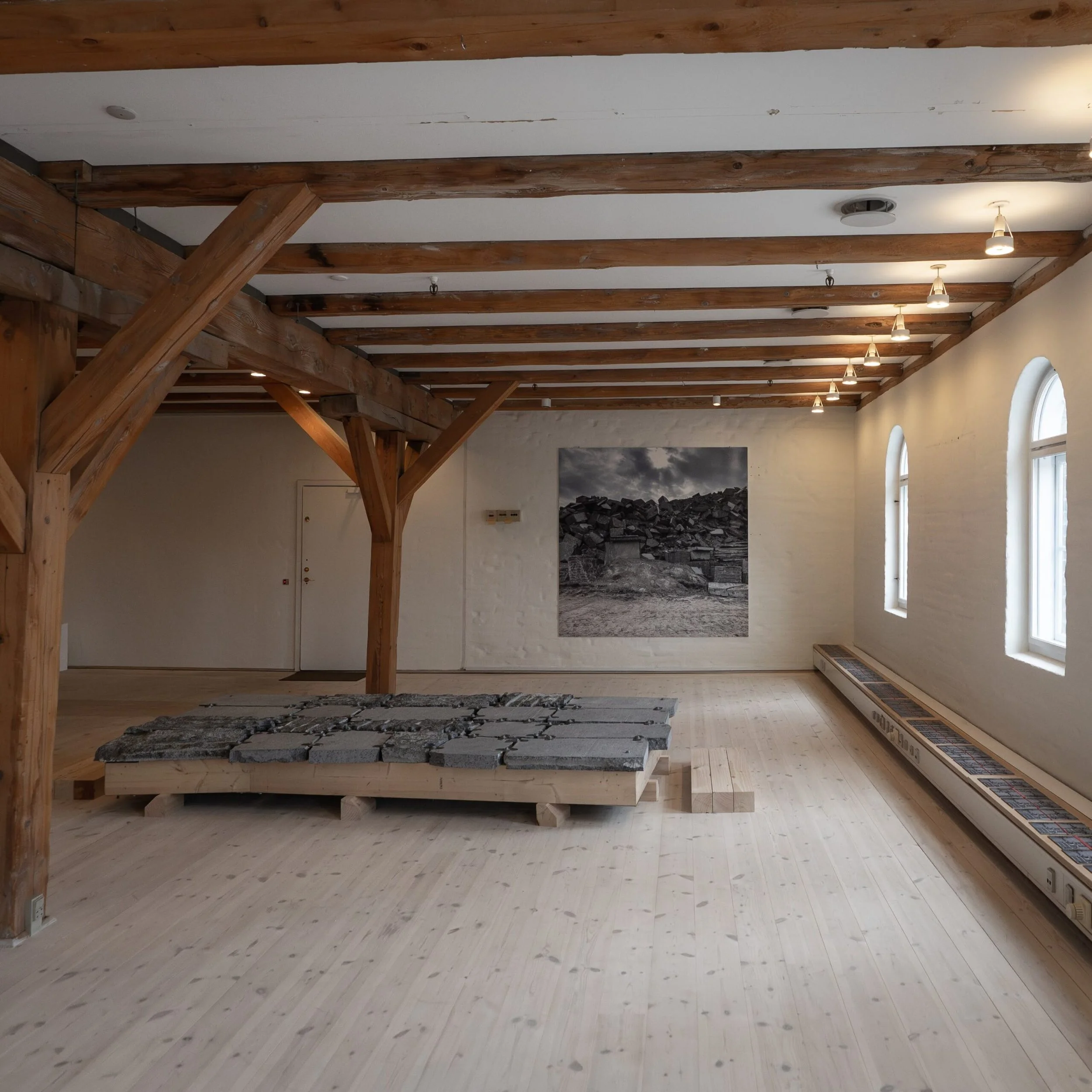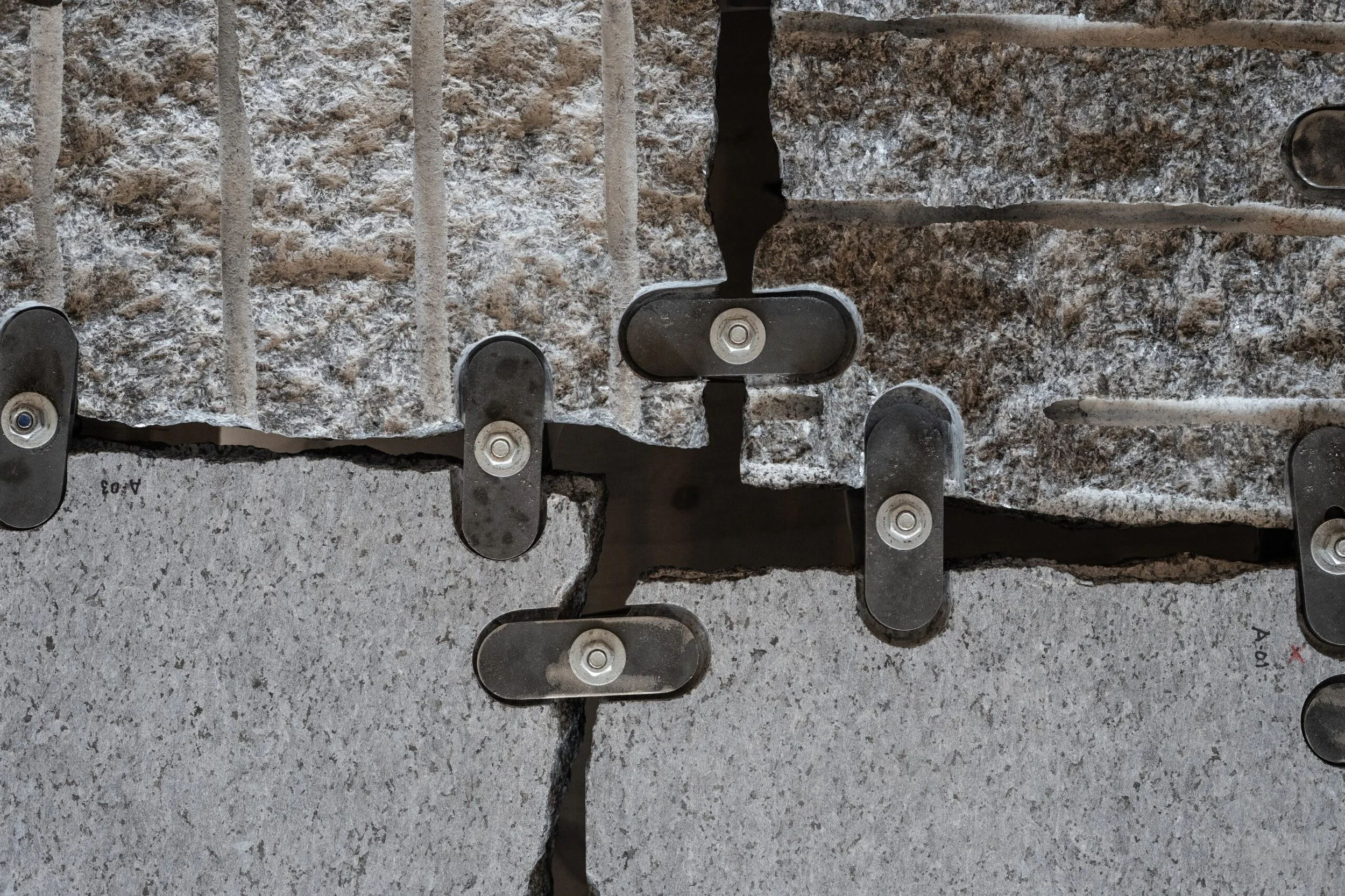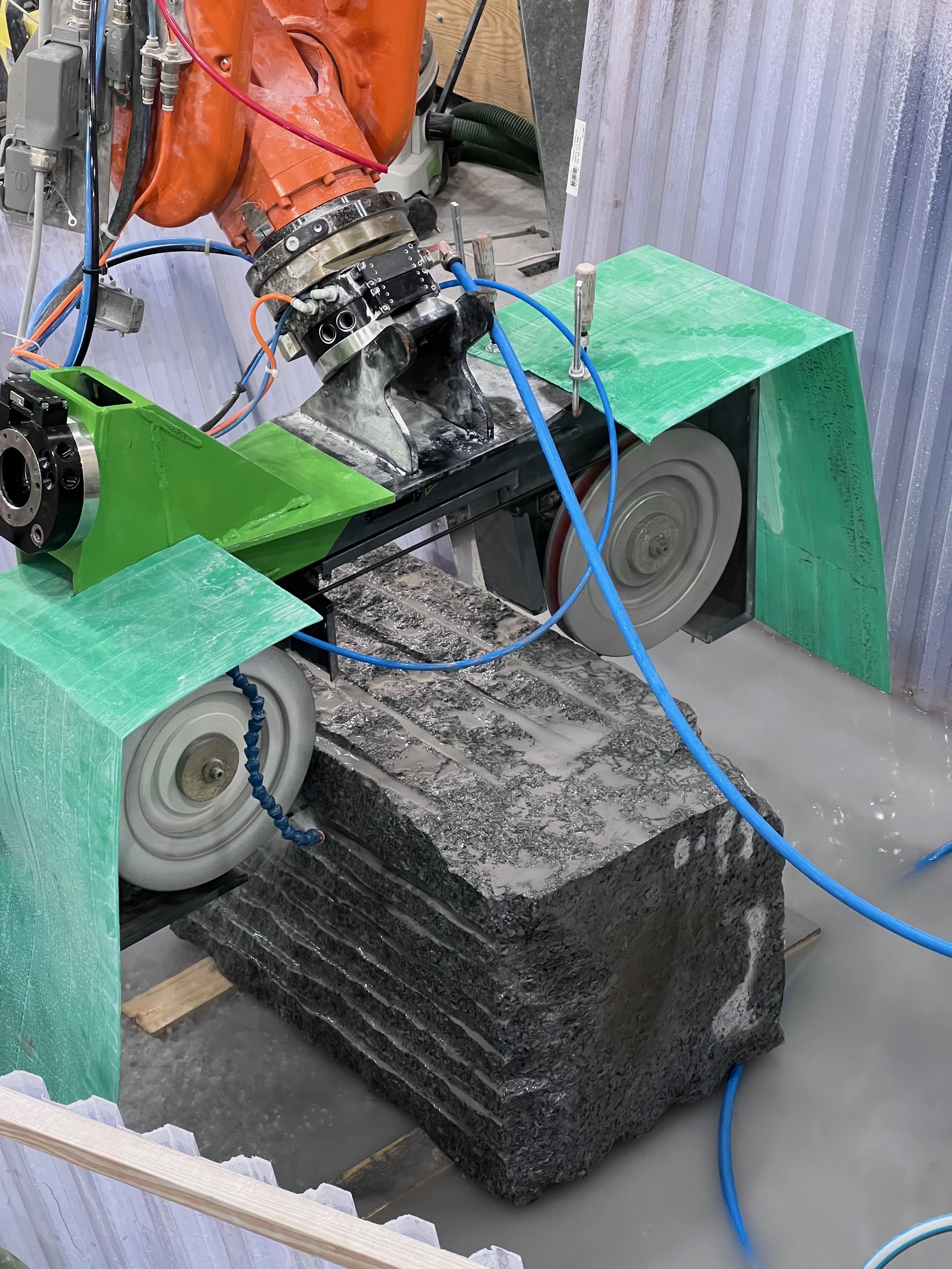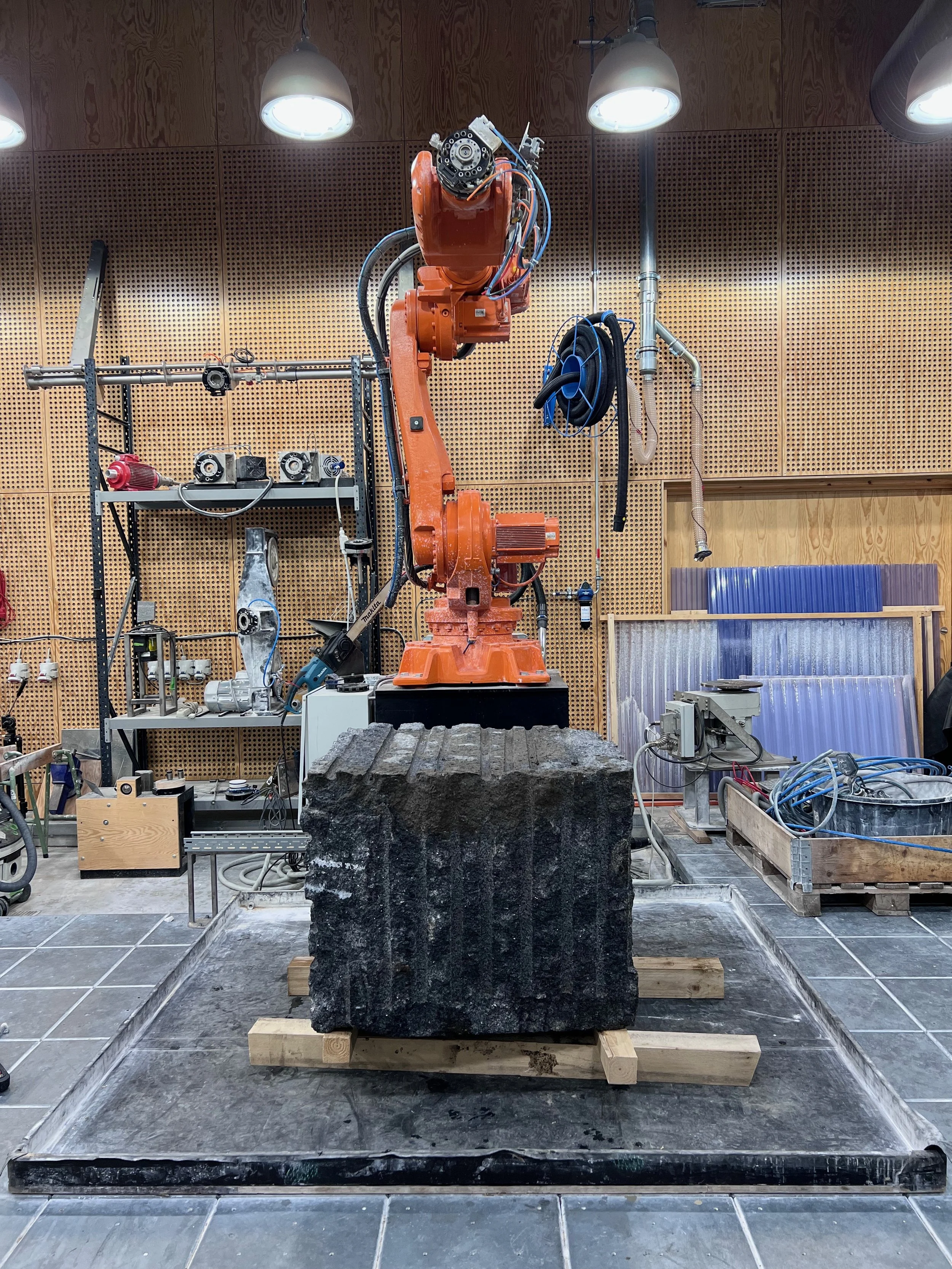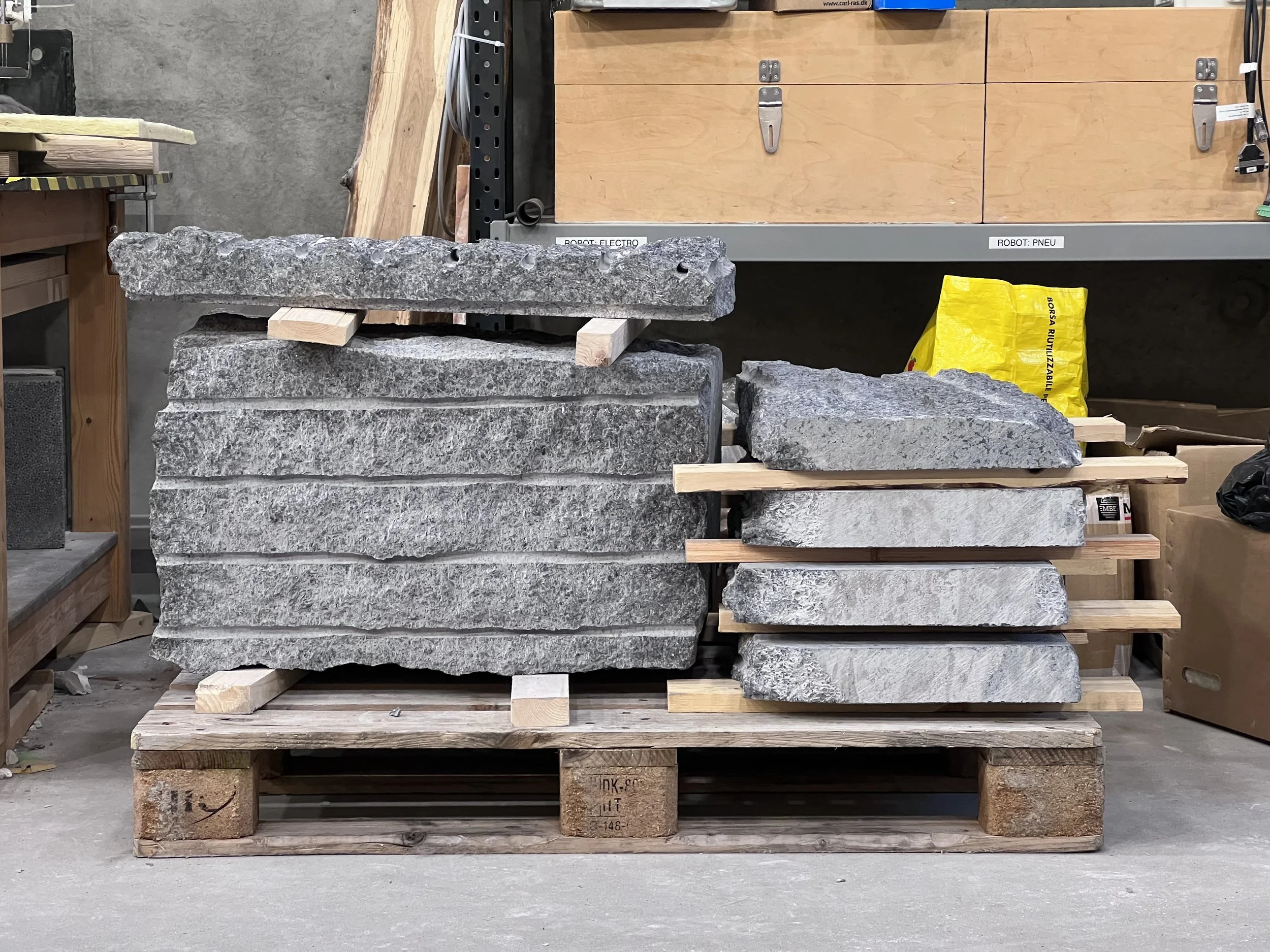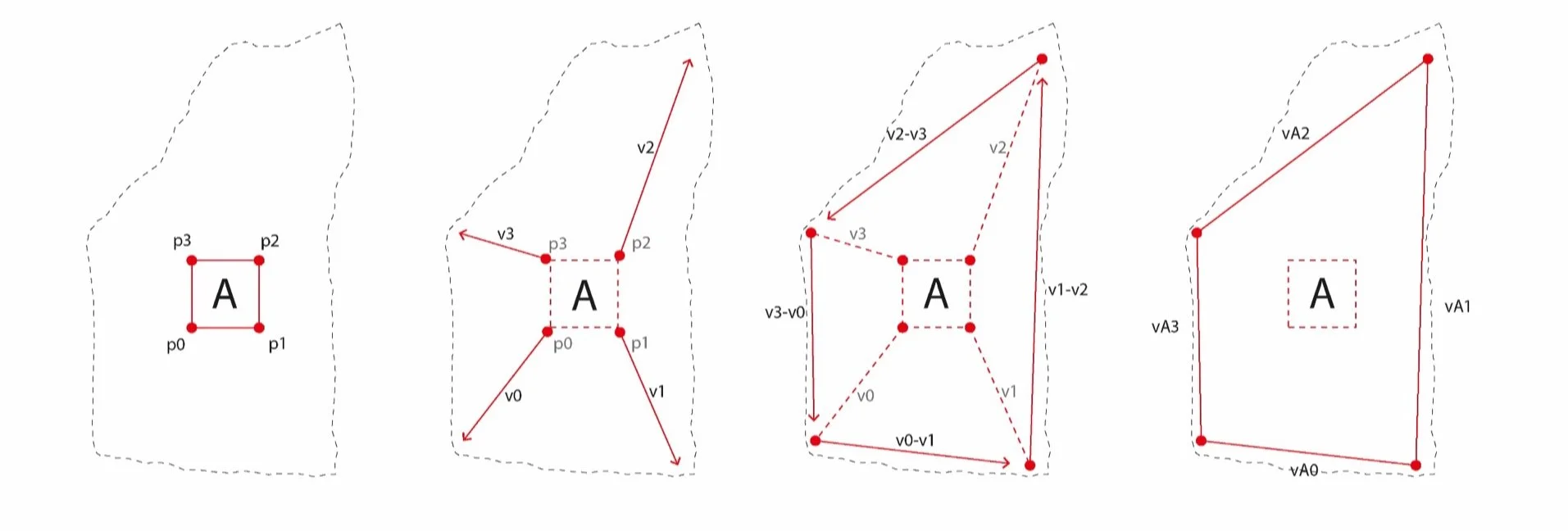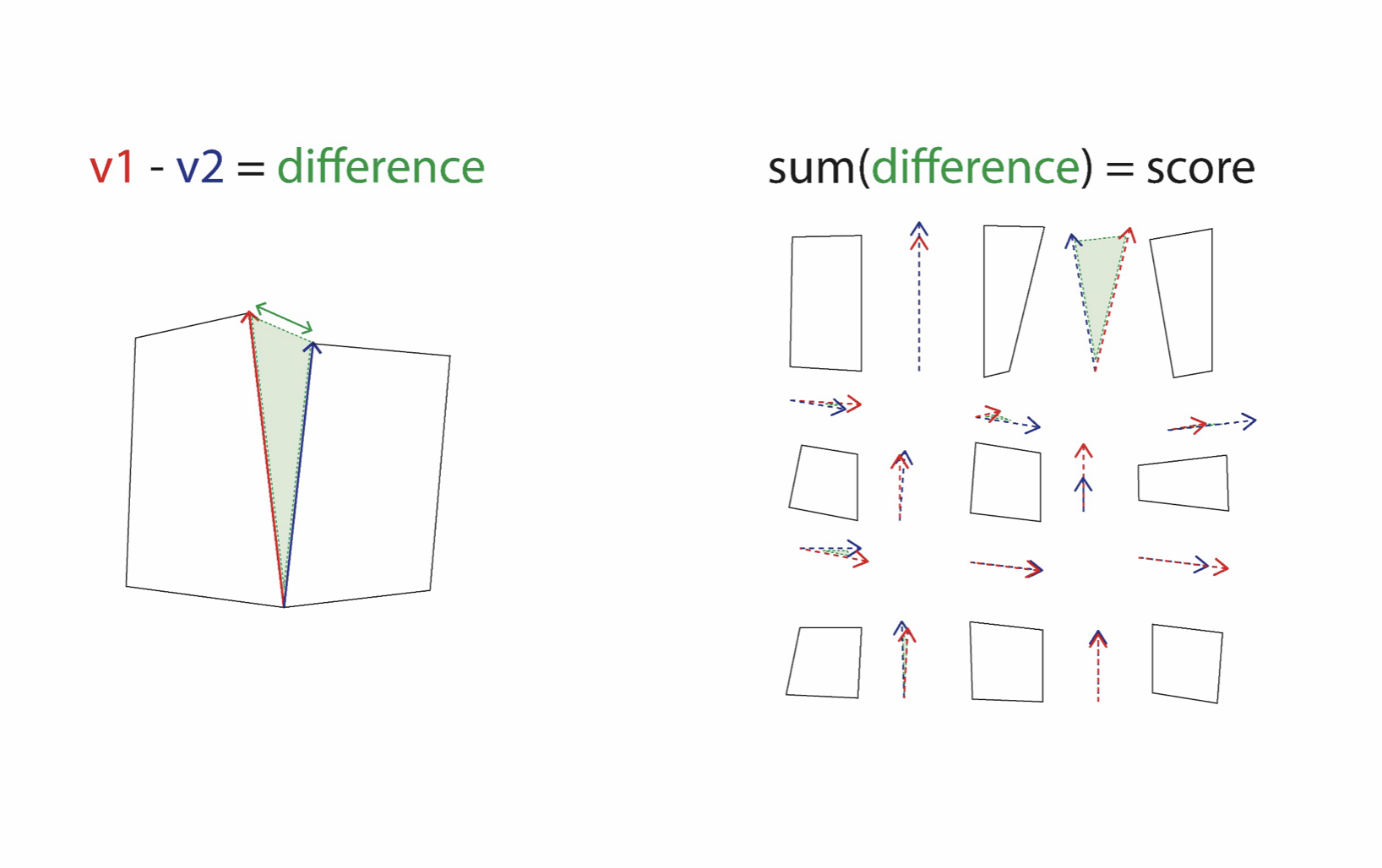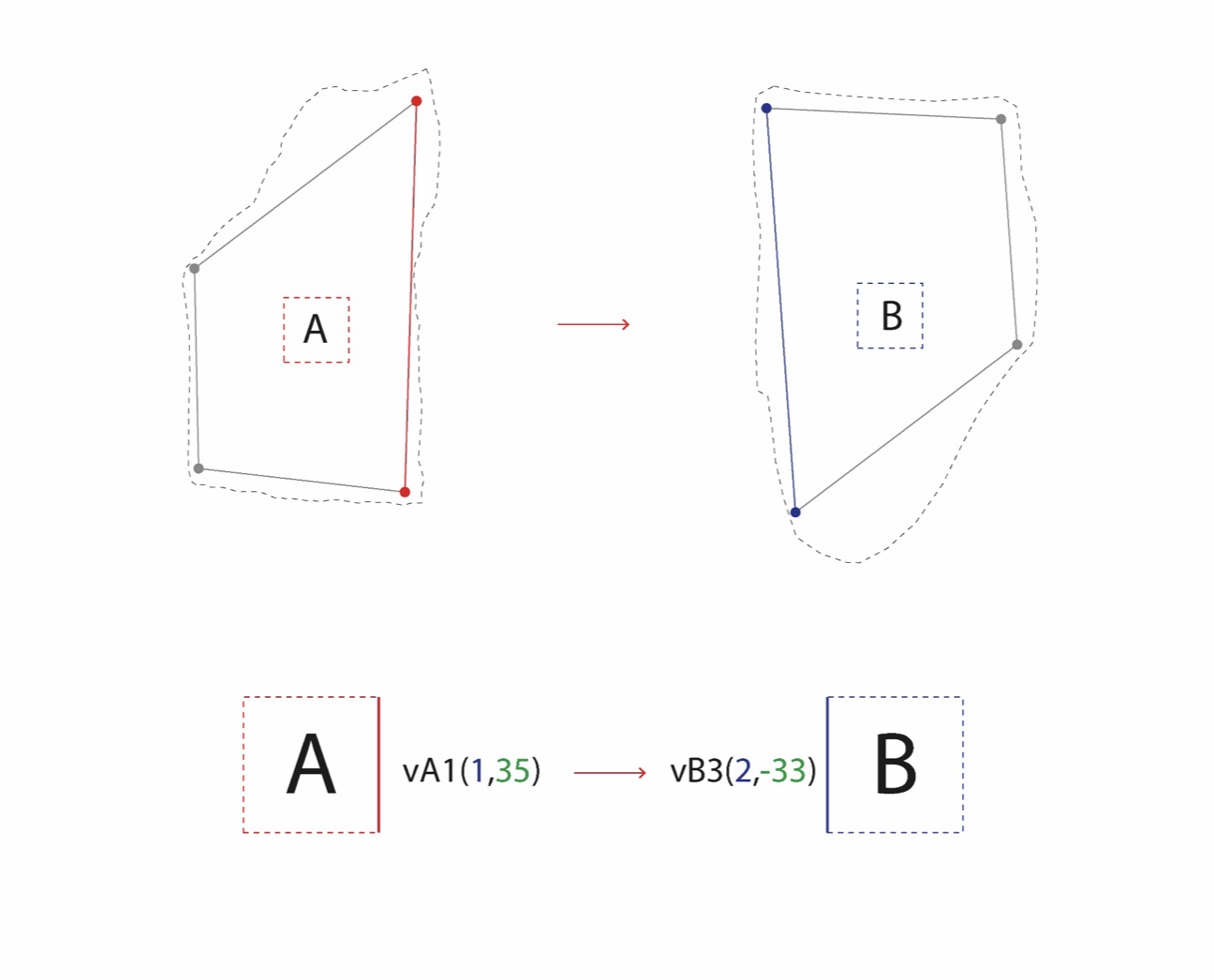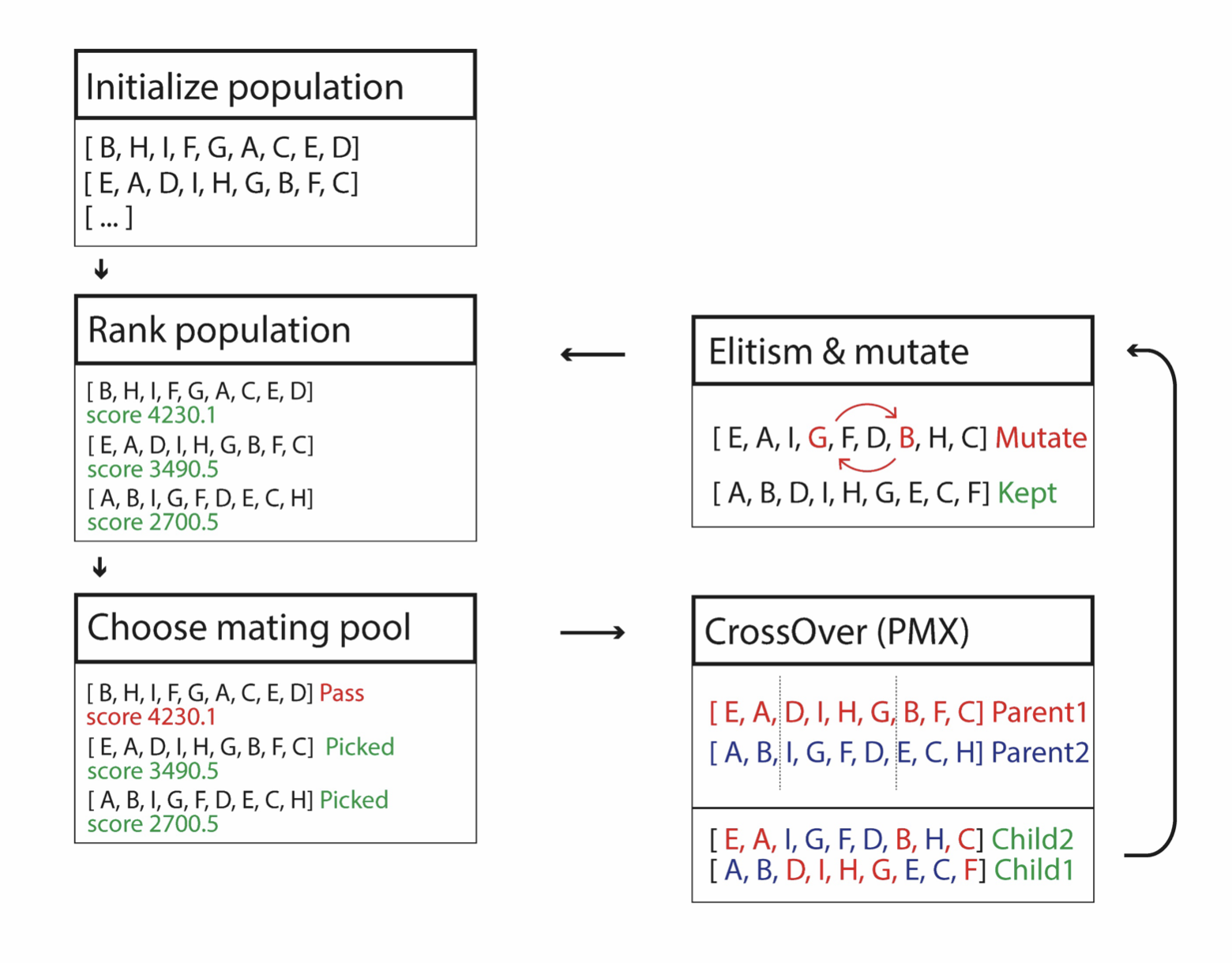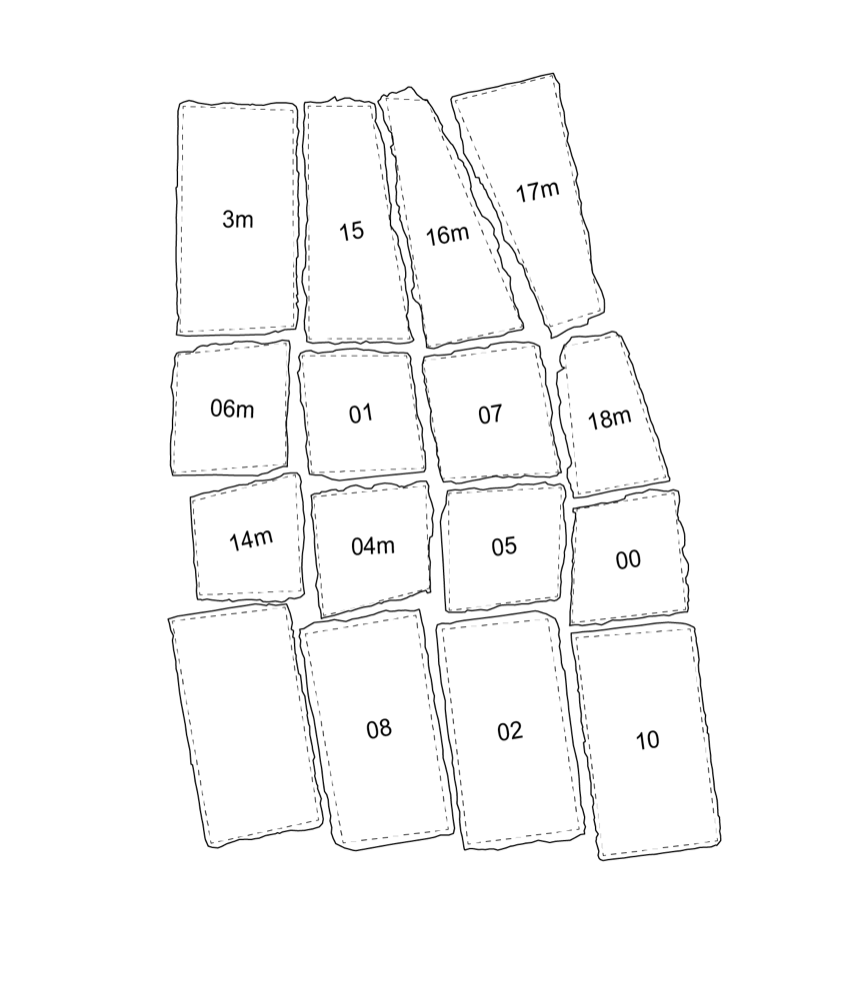Stepping stones
2023
Aarhus school of architecture,
Verner Overgaards family research grant
Installation by the Ecologies of Stone research group at Aarhus School of Architecture, on display at the offices of Rønnow, Leith & Høggori and the Værksted for Arkitektur. It utilizes low-processed waste blocks of stone from Larvik, Norway—known as larvikite—to construct an experimental, full-scale structural floor.
Stepping Stones is a floor system crafted from surplus Larvikite stones, minimally processed to highlight their natural qualities. By employing digital sorting methods, the project utilizes unused quarry materials—often considered waste—while showcasing the sustainability and reusability of natural stone as a structural alternative to concrete.
I contributed to the project by developing the strategy for digitally sorting the slabs and programming the genetic algorithm to solve the sorting process.
Algorithmically sorting physical objects
We liked the idea of using the stone slabs as is, without cutting them to shape. Both as a way to minimize waste but also to explore an aesthetics usually attributed to a trained human eye laying flagstone pavers.
This meant that the floor assembly would be made out of pieces that don't necessarily fit together. The task was making an algorithm to solve a puzzle without no correct solution, we would have to find the a solution good enough, without really knowing if it existed.
The Larvikite waste stones weighs a ton, literally. Making it favorable moving them as few times as possible. After the stones were slabbed with a diamond wire saw, the new slabs were digitally scanned and cataloged with a serial number.
100 000 000 000 000 000 000 000 000 or 100 septillion, roughly how many different solutions there would be to this puzzle.
To begin solving the puzzle, the scanned slabs were simplified into shapes with four straight edges.
The best strategy / heuristic I managed to come up with for evaluating a solution was measuring the difference between neighboring sides and summarizing the results.
(Dont hesitate to contact me if you have any questions or maybe you see a better solution than I came up with)
Before writing a solver algorithm, the shape is further simplified down to the numerical coordinates of its 4 corners
Representing the slabs as four sets of numbers makes the task of solving much more computationally efficient
The solver I made for this project is a genetic algorithm, drawing from darwinistic principles to solve the slab puzzle.
A diagram of the genetic algorithm used to find the final slab configuration. The different letters A, B, C, D… represent a unique slab. It’s essentially a guide for placing the real stones. [A, B, C, D, E, F] indicates that stone A goes in the first spot, and so on. If a set of stone ie [E,A,C,D,B,F] gets a good score after the ranking step, its granted a higher probability to pass on some of itself to the next generation. Thousand of these generations are needed to find a good solution.


